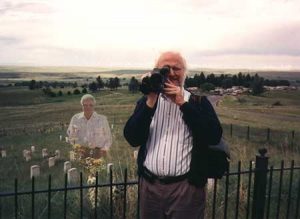Mystory
 Identity (Know Thyself)
Identity (Know Thyself)
- There are reasons why creativity is not the basis of conventional pedagogy. Creativity does not happen in general, but must take place in relation to specific fields of productivity and their paradigmatic problems. The assumption is that egents first must learn “normal science,” and then innovate. In the absence of the unknowns of a discipline, mystory poses the maker’s own identity as the mystery.
- Another obstacle to education as creativity is the peculiarity of inventive reason, whose inferential movement from the known to the unknown involves risky departures from proven procedures, counterintuitive choices and operations, a persistence of application in the face of unpromising results, and similarly unusual experiences. The one object of study likely to motivate a maker to undertake these trials is a self-portrait. The problem of one’s own identity is a simulacrum of the unknowns of any field of knowledge. Within the framework of the wide image, every invention in the specialized disciplines is a self-portrait. It is difficult to remain indifferent or disengaged when the heart of the inquiry is a vision of one’s own being.
Identification
- To make a mystory is to notice and record the identifications organizing our experience. We accept the theory of ideological interpellation as an explanation of identity construction, but with the understanding that individuals experience these internalizations of default collective norms of thought and behavior more through emotion, affect, intuition than through explicit concepts and ideas. The mystory maps the makers’ passages between living and artificial memory, between embodied experience and the social archives of lore, libraries, databases, festivals, rituals, and other external collective information storages. Thus for example long before one starts thinking about a career and how to make a living in a capitalist economy, one has already internalized the norms and expectations of competition within the lifeworlds of Family, Entertainment, and School. The wild card (the joker) in the deck of socialization, however, is the unpredictable way these default moods are internalized within the biologies and peculiar circumstances of individuals.
- Poetic Encounter
The overall effect of mystory is that of an extended parable. It is what Roland Barthes called a structural self-portrait. The makers compose an analogy between their own personal situation and the situations observed in the relevant stories located in the popcycle institutions within which our identity is constructed. The method is that of modernist poetics, variously named “objective correlative,” “correspondences,” “world-inner-space.” Some situation in the external world is recognized/adopted as an analogy or allegory of how the makers feel about their personal situation. The outside scene is the “vehicle” in a metaphor whose “tenor” is the maker’s spirit, temperament, state of mind. Thus when Ulmer identifies with Will Kane (Gary Cooper) in High Noon or with Custer at the Little Bighorn, it is not because he is the same as that person or resembles that person directly, nor that his circumstances are literally those of showdowns and last stands, but that his circumstances have a mood of showdowns and last stands (this is what a situation of masculine gendering in a capitalist society felt like to him).
- Testimony, not Confession. For an image to become wide, for the simulation to work, egents engage emotionally with the design process. This engagement is easiest with personal memories of Family life. There is little difficulty in recalling Entertainment works, but then the work must be reviewed/reread in order to notice the relevant resonant details. This act of research is essential when it comes to Community History and Career field. The relevance of a specific history is established through the sheer fact of life circumstances associating the makers with a given context of place, ethnicity, religion, or whichever identity community one decides is most significant. After that the work of identification is intellectual, based on the assumption of interpellation, that I must have assimilated in some way the beliefs and attitudes circulating in my environment. The key in every case is the bodily emotional experience of recognition, the sting or punctum as Barthes called it, in which the Entertainment, History, or Career scene shows me figuratively, metaphorically, the nature of my own state of mind.
- To make this event of revelation happen the makers must put themselves in the picture. But this entering of one’s own circumstances need not involve any secrets. Rather, one simply documents the external details of any situation that has persisted in memory. An assumption is that a reason for this memorability is that the situation involved some lack of fit between the individual and the identity expectations of the default norms. The mystory testifies to these moments of self-consciousness awakened by the problems of being and becoming. Indeed, mystory is considered relevant to creativity just because of the assumption that one’s approach to problem-solving in a Career field is shaped by the experience of “problem” in the institutions of the popcycle.
